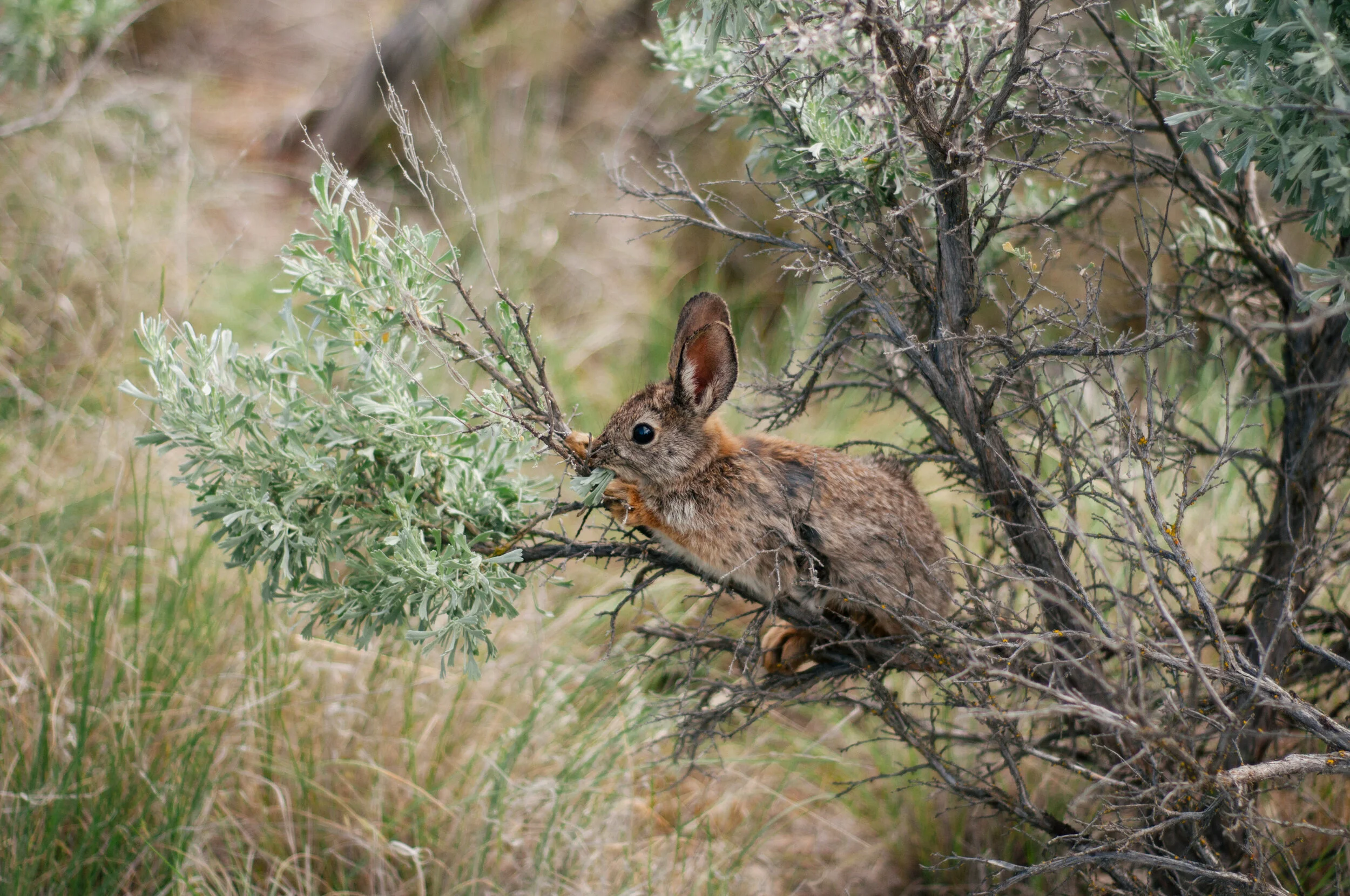by Claire Kurlychek, Americorps Stewardship Assistant
A relentless hunter darts erratically through the air as twilight fades to dusk. The winged creature works to consume thousands of insects before the temperature drops and darkness drinks the last bit of light from the atmosphere. The mammal dips for a drink as its heart thunders hundreds of beats in mere seconds. The essential ballet continues to a near silent soundtrack of wingbeats and night hawks.
A pallid bat in Washington’s shrub-steppe. © Michael Durham
This epic tale continues night after night throughout the summer months, with a widespread and significant impact on agriculture, biodiversity, and medicinal applications that often goes unrecognized.
Flying rats, birds with fur, disease vectors…. Bats have been misunderstood and misrepresented in the folds of history. In recent decades, research is shedding light on just how imperative these unique creatures are to a cohesive environment.
Whisper Lake at dusk is prime time for bat viewing. © Claire Kurlycheck
In order to highlight the import role bats play in an ecosystem and contribute to species tracking, the Wenatchee field office has continued work with the North American Bat Monitoring project and reached out to folks who might not have had the opportunity to learn about these unique animals.
On a cool night in mid-July a group from the Wenatchee Ment2B YMCA mentoring program visited the Moses Coulee Field Station to detect a range of bat species. The group separated myths from facts, discovered the bat life cycle with Ella Rowen of Washington Department of Fish and Wildlife, and used an Echo meter to detect six different species of bats hunting near Whisper Lake.
In the month of August, the Conservancy participated in the North American Bat Monitoring project (NABat) for a second year. NABat utilizes a network of partnerships across the continent to gather reliable bat population data. Historically Moses Coulee has recorded 14 of the 15 bat species in Washington State. In 2018, 11 different species of bats were detected in Moses Coulee: Pallid Bat, Big Brown Bat, Hoary Bat, Silver Haired Bat, Little Brown Bat, California Myotis, Western- Small Footed Myotis, Western- Small Eared Myotis, Fringed Myotis, Yuma Myotis, Canyon Bat. The data collected in 2019 has been sent to Oregon State University, the Northwestern NABat Hub, for analysis. The results will be reported mid-winter to determine if Moses Coulee continues to be prime habitat for the relentless hunters.
Banner photo © Michael Durham, Durmphoto.com.


























